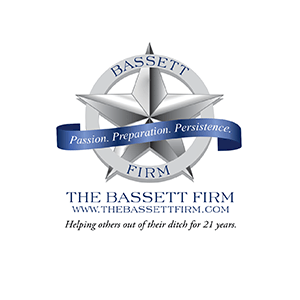This summer, the Texas Supreme Court handed down its decision in Gregory v. Chohan, addressing how non-economic damages should and should not be proven in order to survive factual and legal sufficiency challenges. Part one of this series will address what not to do when proving up non-economic damages, while part two will address what to do.
The opinion in Gregory arises from a multi-vehicle collision where several vehicles crashed into a jack-knifed 18-wheeler, blocking multiple lanes of traffic. The decedent at the heart of this appeal was killed after being crushed by a van while trying to render aid.
At issue on appeal was the absence of an allegedly responsible third party and the jury’s award of $15,065,000.00 in non-economic damages. While issues of improper or excessive awards are often remanded for remittitur, the Court remanded the case for a new trial entirely to address the responsible third-party issue and damages.
The Court in Gregory was very critical of the opinion of the Court of Appeals for failing to justify its upholding of the jury’s award for non-economic damages when the evidence was legally insufficient to support it. Further, the Court criticized the “shocks the conscience” standard utilized by the Court of Appeals for assessing whether damage awards indicate passion or prejudice rather than evidence. The Court stated that the standard is too flexible when courts reviewing non-economic damage awards are “to do more than consult their consciences.”
In addition to criticizing the Court of Appeals, the Court criticized some practices used by attorneys when arguing non-economic damages, which now stand as a lesson of what not to do when proving up non-economic damages. Specifically, the Court rejected the practice of asking jurors to “pick a number,” impermissible computations, and unsubstantiated anchoring.
Pick a Number
While the Court recognized the difficulty in calculating monetary damages for noneconomic damages, it stressed that the process is not arbitrary. The amount must relate to “the nature, duration, and severity of the noneconomic injury” and “have a rational basis in the evidence.” Jurors should be told how much they should award for non-economic damages and why that amount is justified in light of the evidence. Accordingly, attorneys should not encourage or tell jurors to just “pick a number.”
Impermissible Computations
The Court also criticized the use of impermissible computations for non-economic damages and the requirement of economic ratios in wrongful death cases.
The Court expressly rejected any requirement that ratios between economic and non-economic damages be considered, stating “[o]ur consciences should indeed be shocked by such a suggestion.” This is because suggesting that the ratio between economic and non-economic damages is applicable in wrongful death cases suggests that surviving family members’ grief correlates with their economic status.
The notion appeared repugnant to the Court, which stated:
“[W]e cannot endorse a rule under which a wealthier family can recover more mental anguish damages than another family could simply because the wealthier decedent stood to earn more during his life.”
The Court also criticized the use of impermissible computations. Impermissible computations are formulas used to “calculate” mental anguish damages wholly unrelated to the evidence. For example, plaintiff’s counsel in Gregory suggested that jurors award two cents for every 650 million miles traveled by the defendant trucking company for mental anguish damages. In doing the math, the total under that computation is 13 million, which is just shy of the 15 million awarded. This was an impermissible computation because the defendant’s mileage has nothing to do with the mental anguish felt by the decedent’s family.
Unsubstantiated Anchoring
The Court in Gregory was also critical of the unsubstantiated anchoring done by the plaintiffs’ attorneys. Unsubstantiated anchoring analogizes the party’s arguably priceless loss to high-value tangible goods with no rational connection to the case.
For example, plaintiffs’ counsel analogized a $71 million fighter jet and a $186 million painting to the mental anguish felt by the decedent’s relatives. The Court remarked that such arguments were “impermissible appeals to irrelevant considerations,” and juries cannot rely on them.
Conclusion
In conclusion, plaintiffs’ attorneys should avoid using the abovementioned tactics when arguing for their client’s non-economic damages. Moreover, plaintiffs’ attorneys should note whether co-plaintiffs are using these tactics because it could adversely impact their client on appeal. As was the case here, the Court rejected the idea that it should not consider improper arguments made by counsel for the co-plaintiffs because it affected the jury all the same.
Additionally, defense attorneys should be familiar with this case and know what tactics to look out for and how to combat them. While trial courts have an obligation to prevent improper jury arguments without objection, it is always good practice to object to improper arguments and preserve the record.

